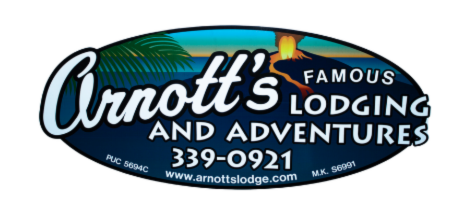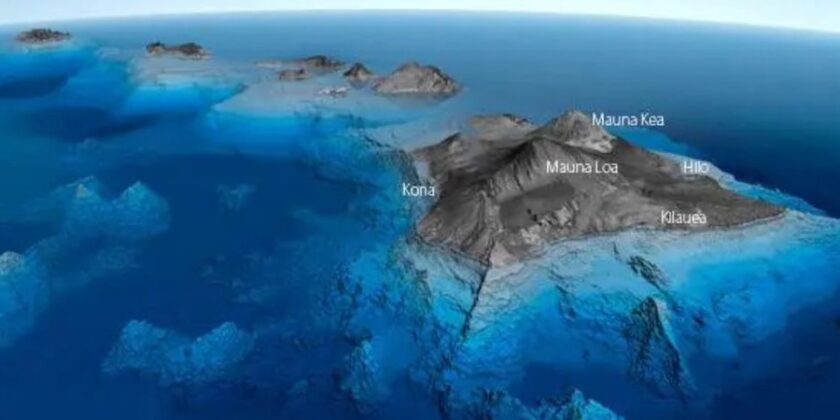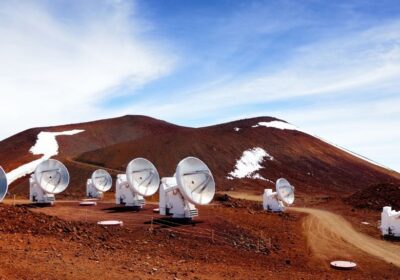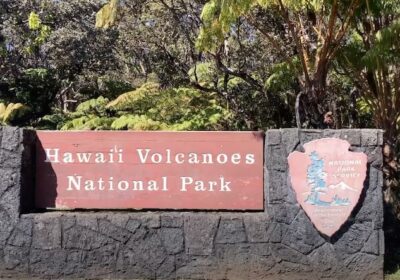Big Island of Hawaii: Where Earth is Still in Motion
Where Fire Meets Ocean and Legends Come Alive
If you travel to Hawaii, you must visit the Big Island. Imagine standing at the edge of the world, where molten lava pours into the sea, where the ground beneath your feet is still warm from the heartbeat of the earth. Here on Hawaii Island—commonly known as the Big Island—beauty isn’t just scenic, it’s alive.
This is a place where fire meets ocean, where snow-capped mountains watch over tropical rainforests, and where ancient Hawaiian legends echo through valleys draped in mist. It’s the largest of the Hawaiian Islands, yet one of the least populated, giving travelers space to truly breathe, explore, and connect with nature in a way that few places on earth allow.
As your virtual tour guide, I’ll walk you through the origins, history, and science of this island, while also answering the top questions travelers ask. Whether you’re planning your first visit or dreaming about your next one, this is the deep dive into why the Big Island of Hawaii is not just a place to visit—it’s a place to experience.
You Asked – We Listened
When & How Was the Big Island of Hawaii Created?
The Big Island is geologically young, estimated to have formed between 400,000 and 800,000 years ago. Compared to the other Hawaiian islands, it’s still a baby—but a powerful one. This island isn’t finished; it’s still growing, thanks to continuous volcanic activity.
As I often tell my tour guests standing near the rim of Kīlauea crater, “You’re witnessing the Earth mid-sentence—still writing its story.
The island was formed by five massive shield volcanoes—Kohala, Mauna Kea, Hualālai, Mauna Loa, and Kīlauea—rising from the ocean floor as the Pacific tectonic plate slowly moved over a volcanic hotspot. Over time, each volcano erupted, cooled, and layered on top of the next until the Big Island emerged from the sea.
Today, Mauna Loa is the largest active volcano on Earth, and Kīlauea, often referred to as “the world’s most active volcano,” continues to shape the island’s landscape. It’s a place where geology textbooks come to life—and you get front-row seats.
The First to Rise: The Story of Kohala, the Elder of the Big Island of Hawaii

Long before the world knew the Big Island of Hawaii as we do today, before the cliffs of Waipiʻo Valley stood tall and before molten lava from Kīlauea painted the land in glowing orange, there was only the deep, endless blue of the Pacific Ocean. Beneath its surface, a fiery force was stirring—hidden from view, but powerful enough to change the world above.
It began quietly. Deep below the sea floor, the Pacific Plate slowly drifted over a geological hotspot—an upwelling of molten rock from the Earth’s mantle. Pressure built over thousands of years. Then, at a moment lost to time but never forgotten by the land, the first eruption broke through the ocean floor.
This was the birth of Kohala, the oldest of the five volcanoes that would one day form the Big Island of Hawaiʻi.
Kohala: The Mountain of Beginnings
Rising from the sea some 400,000 to 500,000 years ago, Kohala was the pioneer—the first to reach sky from sea, the first to see sunlight. In Hawaiian tradition, the land is alive, and Kohala was the firstborn of a powerful lineage. The locals call it kupuna—a respected elder.
For hundreds of thousands of years, Kohala erupted, cooled, and grew, slowly building up its mass until it towered above the ocean as an island unto itself. Birds began to nest on its slopes. Rain-fed its valleys. Life followed lava.
Eventually, as Kohala’s fire quieted and its eruptions faded, the younger siblings arrived.
- Mauna Kea began forming next, rising to become the tallest mountain in the world—from base on the ocean floor to summit above the clouds.
- Hualālai, Mauna Loa, and Kīlauea followed, each adding their voice to the island’s song.
Today, Kohala no longer erupts—its last lava flow was over 60,000 years ago—but its presence is undeniable. Its rugged valleys, such as the awe-inspiring Waipiʻo Valley, tell stories of ancient floods and landslides. Its cliffs rise sharply above the sea, carved by time and wind. And its ridges are covered in mist and native forests that whisper of a different age.
Shaped by Fire, Honored by Time
Hawaiian history and science often dance hand in hand. According to Hawaiian tradition, Kohala is also the birthplace of King Kamehameha the Great, the leader who would unite the Hawaiian Islands under one kingdom. The bones of heroes are said to be hidden in its cliffs. The mana—spiritual power—of this place is strong.
Even today, standing on the windward slopes of Kohala, looking down toward the ocean cliffs, you can feel it. The mountain may sleep, but it still watches.
Why Kohala Still Matters Today
For travelers seeking a connection to the oldest, most sacred landscapes on the Big Island, Kohala is where your story should begin. Whether you’re hiking through Pololū Valley, exploring the charming town of Hawi, or just admiring the deep green folds of the northern coast, you’re walking in the footsteps of giants.
Kohala is more than a volcano. It’s the first breath of an island. The elder in the family of fire. The one who started it all.
What Makes the Big Island of Hawaii So Special?

Ask any local, and they’ll tell you: “The Big Island of Hawaii has everything.” And it’s true.
Traveling across the Big Island is like moving through different worlds in a single afternoon.
Absolutely. Here’s a heartfelt and vivid story that captures why the Big Island of Hawaiʻi is so special. It uses the tone of a professional, storytelling tour guide who deeply respects the land and its people. It’s written to inform, inspire, and connect with travelers’ emotional core.
A Place Where the Earth Still Dreams
They say the Big Island of Hawaii isn’t just a place you visit—it’s a place that stays with you.
The first time I stepped off the plane in Kona, the warm breeze smelled like salt and plumeria. The lava rock shimmered in the sun like it had secrets. And the horizon—where sky met ocean—felt impossibly wide. I remember thinking, this isn’t just another island. This is something else entirely. And I was right.
Born of Fire, Shaped by Spirit
The Big Island is alive. Not metaphorically—literally. This is one of the few places on Earth where you can watch the planet being born. Where rivers of lava reshape coastlines. Where craters steam and hiss. Where Pele, the goddess of volcanoes, is not just legend, but a living presence in the land.
There’s a reason the locals say “respect the ʻāina” (the land). Here, the Earth doesn’t just sit quietly. It speaks. And if you listen closely, you’ll hear it.
You’ll hear it in the whispering of the trade winds through the hala trees, in the roar of waves crashing against ancient lava cliffs, in the distant rumble of Mauna Loa as it slumbers beneath the surface. You’ll feel it in your bones as you stand under a starlit sky at Mauna Kea’s summit, closer to space than anywhere else in Hawaiʻi.
A World Within an Island
The Big Island of Hawaii is special because it contains worlds within itself.
It’s the only Hawaiian island where you can:
- It is the only place in the U.S. where you can see lava, snow, and black sand beaches all in one day.
- Ski on snow-capped mountains in the morning and snorkel with manta rays by night.
- Explore 13 of the world’s 14 climate zones, from misty cloud forests to barren lava deserts.
- Walk on black, white, and green sand beaches—all shaped by different stories of fire and time.
- It’s the home of Hawaiian mythology, sacred sites, and cultural history that’s deeply tied to the land.
- It’s a place where you drive through rainforests, cow pastures, coffee farms, and moonscapes all in the same afternoon.
Where else can you travel across so many landscapes without ever leaving one island?
A Place Where Time Moves Differently
Here on the Big Island, time stretches.
Maybe it’s because the island itself is young—still being formed. Maybe it’s because the lifestyle is slower, rooted in aloha and the rhythms of the land. Or maybe it’s because, on this island, you’re invited to be present.
You’re not rushed. You’re not herded from one tourist trap to another.
Instead, you’re given the space to watch a sunrise in silence. To learn the story of a heiau (temple) from a local kupuna. Listen to the Volcano’s rainfall or count the stars on Saddle Road.
It’s not just a trip. It’s a reset.
The Heart of the Big Island
But what makes the Big Island of Hawaii truly special isn’t just the volcanoes or the valleys or the beaches—it’s the people.
It’s the auntie who gives you a slice of fresh mango at the farmers market “just because.” It’s the uncle who waves from his pickup truck as you pass on a country road. It’s the tour guide who tells you stories handed down for generations, not to impress, but to honor.
There’s an authenticity here that you feel right away—a deeper connection to land, culture, and each other. The Big Island doesn’t try to be anything it’s not. It just is. Wild, warm, raw, and real.
Come, Let the Big Island Speak to You
So why is the Big Island of Hawaii so special? Because it reminds us of our place in the universe, it humbles us with its age, awes us with its power, and heals us with its beauty.
You don’t just see the Big Island. You feel it. And once you do, you’ll never forget it.
Why Do the Hawaiian Islands Get Smaller Away from the Big Island?
This is one of my favorite facts to share on a volcano tour: the Hawaiian Islands are created sequentially as the Pacific Plate drifts over a fixed volcanic hotspot. As you move northwest (toward Oʻahu and Kauaʻi), the islands get older, smaller, and more eroded.
The Big Island is the youngest and still growing—new land is literally being added during eruptions. It’s like watching time in reverse.
Why Is the Big Island Not the Most Populated?
Despite being the largest island, the Big Island only has about 200,000 residents. That’s because:
- Much of the land is rugged, remote, or volcanic.
- Infrastructure is spread out—no bustling cities like Honolulu.
- Lifestyle is slower, more rural, more nature-focused.
And honestly, that’s what many travelers love about it. Space, peace, and room to explore without the crowds.
How Much Money Do You Need to Live on the Big Island?
Living here can be both affordable and expensive, depending on lifestyle:
- Housing is cheaper than Oʻahu or Maui, but utilities and groceries are higher.
- Monthly living costs for a single person: ~$2,500–$4,000
- For a family: ~$4,500–$7,000
Living sustainably—growing your own food and harvesting rainwater—is part of island life for many locals.
What Will the Big Island Look Like in 1 Million Years?
It’s likely the island will be even bigger, possibly merged with Lo‘ihi, the underwater volcano southeast of the Big Island. Kīlauea and Mauna Loa may be dormant by then, and erosion will have carved valleys and cliffs. But the island’s next chapters are still unwritten.
A Glimpse Into Hawaii’s Future
The Big Island of Hawaiʻi may be the youngest in the Hawaiian chain, but it already feels ancient—its lava plains stretch wide like the pages of an unfinished book, and its volcanoes rise like watchful elders guarding stories yet to unfold.
But imagine for a moment, if you will, standing not in the present, but a million years into the future. The sun still rises over Hilo Bay, but the island you stand on… isn’t quite the same.
A New Island Rises: The Birth of Kamaʻehuakanaloa
Far below the ocean’s surface, about 20 miles southeast of the Big Island, a volcano is quietly growing. It’s called Kamaʻehuakanaloa (formerly known as Lo‘ihi), and it’s the next island in the Hawaiian chain.
Today, its summit still sleeps over 3,000 feet below the waves, but in a million years? It could rise above the sea, a newborn island of black rock and steam, just as Kohala once did long ago.
Kamaʻehuakanaloa will likely emerge from the ocean depths like a whisper at first—a shimmer on the horizon for curious canoe paddlers, or perhaps a jagged new coastline spotted from orbit. Over time, it may even merge with the Big Island, becoming part of its massive body.
The Evolution of a Giant
Meanwhile, back on the Big Island itself, change is constant—just as it’s always been.
- Mauna Loa, now the largest volcano on Earth, may be nearing the end of its eruptive life. Its once-fiery vents quiet, its broad shoulders slowly wearing down under centuries of rain and wind.
- Kīlauea, the ever-active volcano goddess’s playground, may still be erupting—or it may have passed the torch to younger, more energetic vents emerging farther south.
- Mauna Kea, now a sacred mountain and astronomy hub, will continue to erode, slowly reshaped by glaciers, wind, and gravity. Its summit might no longer be the tallest—perhaps buried in layers of sediment and time.
In 1 million years, what is now high will be low, and what is new will be old.
The Big Island will be bigger, broader, but gentler. Its jagged cliffs will soften, its valleys deepen, and its coastlines stretch as lava fills the sea and becomes new land.
A Bigger, Wilder Island
With the formation of Kamaʻehuakanaloa and the constant volcanic flow from deep beneath, the Big Island could grow to nearly double its size.
- New mountains may rise in the south.
- The coastline might push farther into the Pacific.
- Coral reefs may circle its edges, teeming with life.
- Entire regions could become rich ecosystems shaped by time and terrain.
Imagine a lush, thriving jungle where there was once dry lava or a deep valley carved by millennia of rainfall and flash floods—what we now call lava fields could someday become forests filled with birds that have yet to evolve.
Time Will Keep Moving
But with growth comes erosion. Even as the Big Island expands, nature will continue to wear it down. Over millions of years, just as the older islands like Kauaʻi have become smaller and rounder, the Big Island will one day follow.
That’s the magic of these islands: they’re not permanent. They’re moments in Earth’s memory—each one with a beginning, a middle, and an end. But in 1 million years, the Big Island will still have a story to tell. Maybe not the same one we know today—but one just as powerful.
The Spirit Lives On
Even if we could time-travel into that distant future, one thing would remain unchanged: the spirit of the island, the mana, would still be there.
Whether walking along a coastline newly formed from a lava delta or hiking trails that were once the heart of Kīlauea’s fire, the sense of awe would be the same. The call to respect, explore, and feel the land would echo across time.
Because no matter what the Big Island looks like in a million years, it will always be special—a place where Earth shows us who she is, and invites us to be part of her unfolding story.
How Long Does It Take to Drive Around the Big Island?
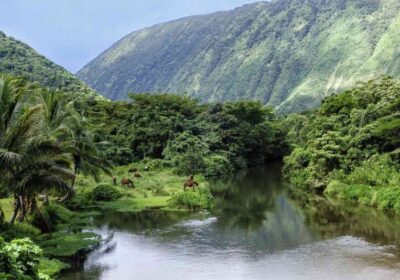
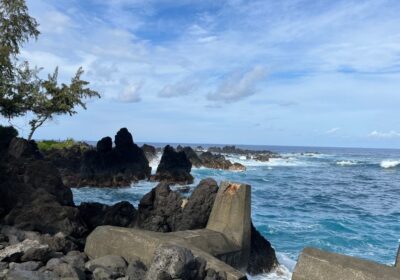
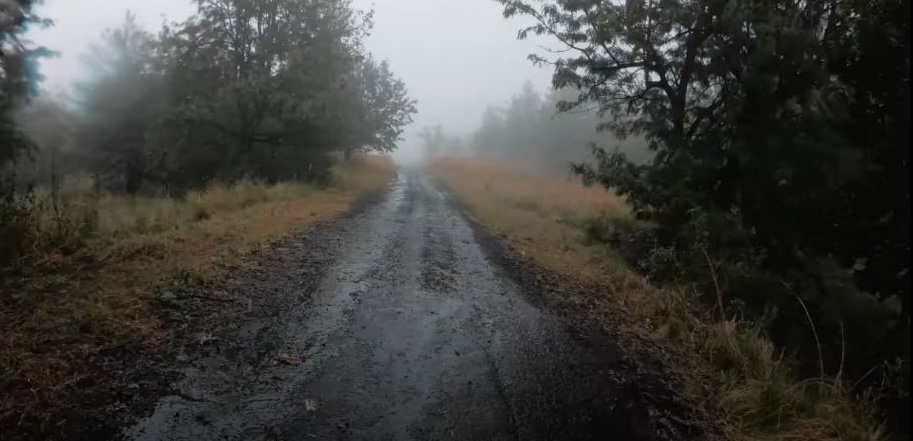
To circle the island on the main highways (Route 11 to 19), it takes about 5 to 6 hours non-stop—but you’ll want to take 2–3 days to explore properly. There are stunning stops like:
- Punaluʻu Black Sand Beach
- Waipiʻo Valley Lookout
- Akaka Falls
- Mauna Kea Visitor Center
Tip for readers: Rent a car—you’ll need one. Public transport is limited.
Is Driving Difficult on the Big Island?
Not at all—roads are well-maintained and uncrowded, especially compared to Oʻahu or Maui. What to know:
- Rent a car with good clearance if exploring off the beaten path.
- Be cautious driving Saddle Road at night—no lights, lots of fog.
- Watch for one-lane bridges and changing weather conditions.
How Many Days Do You Need on the Big Island?
For first-timers:
- 5–7 days to see the highlights (volcanoes, beaches, waterfalls)
- 10+ days to really explore each region, hike, relax, and dive deep into Hawaiian culture
The Big Island is big—twice the size of all other Hawaiian Islands combined—so give it the time it deserves.
What Is the Prettiest Beach on the Big Island?
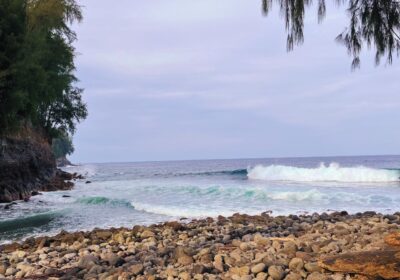
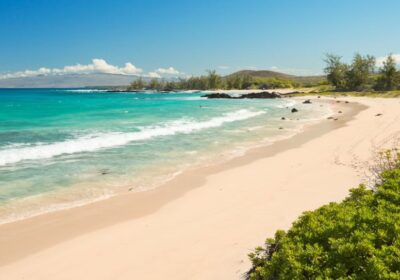

Beauty is subjective, but these beaches are consistently breathtaking:
- Hapuna Beach (Kohala Coast): Wide, white sand, swimmable, family-friendly.
- Punaluʻu Black Sand Beach: Sea turtles resting on jet-black sand.
- Papakōlea Green Sand Beach: A one-of-a-kind green olivine beach—requires a 2.5-mile hike (or 4WD ride).
Each beach tells a different story, shaped by the island’s volcanic heart.
What Is the Best Town to Stay in on the Big Island?
- Kailua-Kona: Great for resort lovers, nightlife, and west coast beaches.
- Hilo: Ideal for waterfall chasers, museum lovers, and those wanting a more local experience.
- Waimea: Upcountry charm and cowboy history.
- Volcano Village: Cozy cabins in the rainforest next to Volcanoes National Park.
Each offers a unique vibe. Kona is best for beaches, Hilo for nature, and Volcano for serenity.
Is the Big Island Expensive?
It can be, but it’s more budget-friendly than Maui or Oʻahu.
Average costs:
- Budget lodging: $100–150/night
- Mid-range: $175–300/night
- Luxury: $400+
Food, fuel, and groceries are higher than on the mainland, but outdoor activities—like beaches, hiking, and waterfalls—are mostly free.
What Is the Best Month to Visit the Big Island?
The Big Island is beautiful year-round, but April, May, September, and October are especially ideal:
- Fewer tourists
- Great weather
- Lower prices on flights and accommodations
What to Do on the Big Island of Hawaii?

Here are some must-do activities for adventurous travelers:
- Visit Hawaii Volcanoes National Park: Walk through lava tubes and gaze into Halemaʻumaʻu Crater.
- Snorkel with manta rays in Kona.
- Hike to the green sand beach.
- Explore Waipiʻo Valley by foot or 4WD tour.
- Stargaze atop Mauna Kea (or at the Visitor Center).
Pro Tip: Build an itinerary that balances adventure and rest—the island has both in abundance.
Can You Swim in the Ocean on the Big Island?
Yes—with awareness. Many beaches are swimmable, especially along the Kona coast where the water is calmer.
Always check ocean conditions, watch for signage, and ask locals before entering. Some beaches, like Richardson’s in Hilo, are lifeguarded and beginner-friendly.
Where Is the Clearest Water on the Big Island?
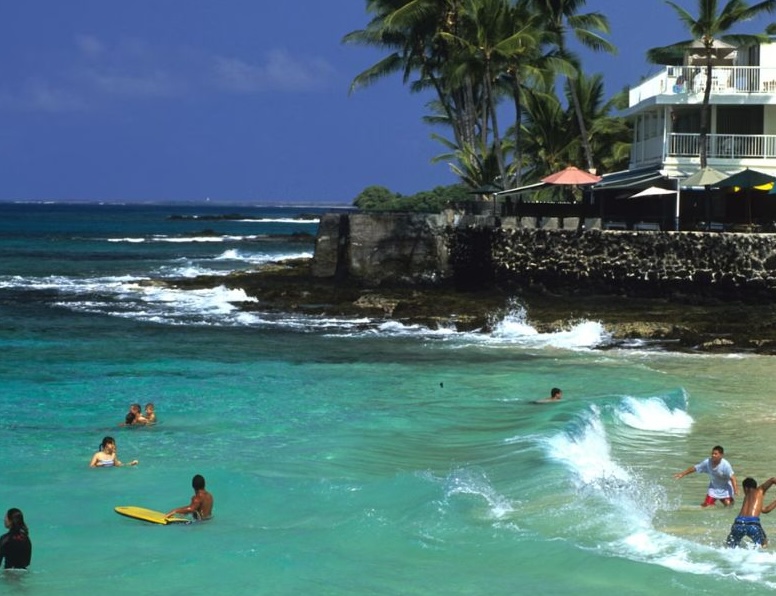
- Kealakekua Bay: Ideal for snorkeling—often crystal-clear.
- Hōnaunau Bay (Two Step): Calm waters and vibrant reefs.
- Mauna Kea Beach: Clear, turquoise water and great swimming.
Where Do Most People Stay on the Big Island?
Most visitors stay in:
- Kailua-Kona (west coast resorts)
- Waikoloa Beach Resort area
- Hilo, for east coast adventures
- Volcano Village, for serenity and proximity to the national park
Each area caters to different travel styles. Split your stay for a full experience.
Is It Still Safe to Travel to the Big Island?
Yes. Volcanic activity is heavily monitored by the USGS and the National Park Service. Eruption zones are contained and do not affect major tourist areas.
As always, follow local news, respect closures, and never trespass onto lava fields or sacred sites.
What Is the Rainiest Month on the Big Island?
The rainiest months are typically November through March, especially on the Hilo side. That said, rain is what makes the east coast lush and green.
Don’t let rain deter you—it often passes quickly, and you’ll still get sun elsewhere on the island.
Can You See Dolphins on the Big Island?

Yes, especially:
- Spinner dolphins in Kealakekua and Hōnaunau Bays.
- Take a guided dolphin-watching tour for the best chance.
- Avoid harassing or chasing dolphins—respect wildlife regulations.
